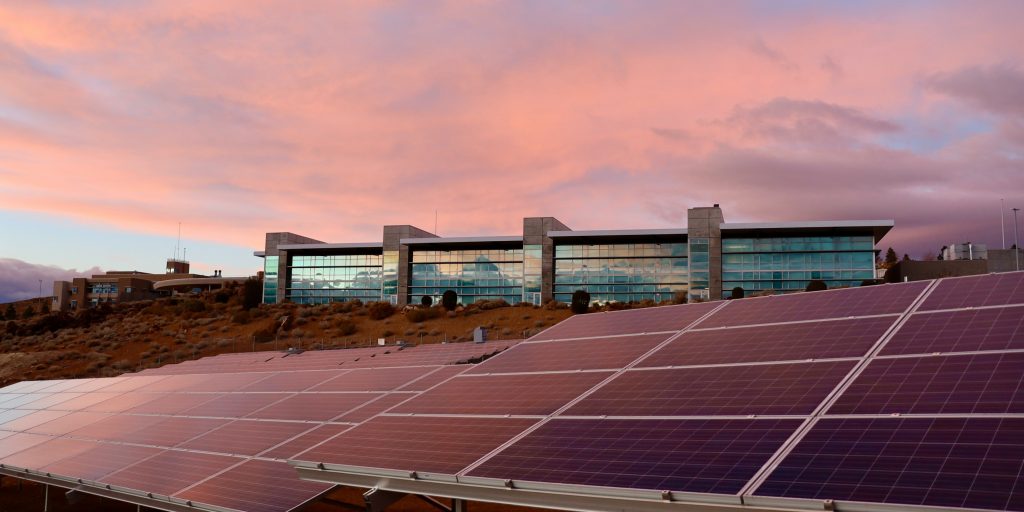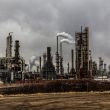Predictions for local governments in 2022: Resiliency and sustainability
We are all aware that 2021 was a challenging year for communities around the country, and while some of these challenges linger, the new year presents an opportunity for local governments to drive community-wide improvements that will optimize buildings, public spaces, utilities and more to create healthy, thriving environments in 2022.
Sustainability is an ongoing priority for local governments. The recent Net Zero Pulse Survey found that more than 90 percent of organizations have a significant 2030+ goal to reduce greenhouse gas emissions and energy consumption. However, even more pressing for government leaders is their ability to increase resiliency in the next year to withstand future challenges and meet the evolving needs of their constituents.
Empowering long-term resiliency
When thinking about a resilient community, government officials can measure success against a range of benchmarks when evaluating their municipality’s self-sufficiency and longevity—two critical factors in today’s fast-paced and dynamic society. Moving into 2022, government officials will define a resilient municipality as one that has:
- Economic vibrancy: The pandemic has reminded government officials of the importance of local economies, as well as their fragility. The ability to keep a community’s economy running and strong is a resiliency indicator, and leaders will continue to use it as a gauge of their performance.
- Pandemic and crisis response: Any local government is now defined by their flexibility and ability to quickly react and adapt when the health of constituents is at risk. For a building to be resilient in the long term, its infrastructure should be responsive to risks and usage needs.
- Predictive analytics: With new artificial intelligence and machine learning technologies, local governments can gather more data and insights than ever into the health and operations of their community. Using these insights, leaders are enabled to make informed, proactive decisions that will prepare them for any future disruption.
- Microgrid investment: Microgrids are more in demand than ever. With costs going down, governments are more willing to invest so they can guarantee the ability to keep their communities up and operating independently, which also allows increased self-sufficiency.
- Workforce development and enhancement: For a community to thrive, it must continue to grow. Focusing on creating long-term, fulfilling career opportunities will continue to attract citizens who will support the local economy, leading to future stability.
Achieving multi-faceted sustainability
Along with a focus on resiliency, citizens and government leaders alike are recognizing the unprecedented need to reimagine sustainability for greater resiliency. In the next year many local municipalities across the country will take the pledge to achieve net zero. The Net Zero Pulse Survey found that 100 percent of government organizations are planning to pursue sustainability certifications, with 59 percent aiming for LEED Platinum. Public expectations for sustainability are driving the push for net zero, with 66 percent of registered voters saying developing clean energy should be a high or very high priority for their government.
Over the next year and beyond, government officials will prioritize sustainable infrastructure as part of their recovery planning as net zero infrastructure supports healthier communities, enhances governmental compliance, extends building lifecycles, reduces overall costs and improves public outreach. Governments will also be cognizant of using renewable energy sources and environmentally friendly materials—like solar photovoltaic (PV) panels—to reduce dependence on coal and natural gas, reduce utility costs, and support resilient infrastructure and a healthier community.
There are several promising technologies that will help governments reduce energy use and carbon emissions in cities. Most prominently, municipalities will turn to all electric vehicles, solar energy generation, as well as LED and other energy-efficient lighting in streetlights and buildings to reduce emissions. Government leaders will also begin to look toward smart grids to monitor electricity use so communities are empowered to make informed decisions about where they can reduce energy usage, as well as waste-to-energy conversion and energy-efficient water treatment technology to offset other emissions.
When discussing local government priorities for 2022, governments are not only thinking about potential building improvements to reduce impacts on the planet, but also in terms of innovation, economic health and social sustainability. Sustainable does not only mean that a community is minimizing their carbon footprint, but also that the community will be able to support its constituents in the long-term. Economic health is an indicator of both resiliency and sustainability, as a good economy also plays an important role in ensuring cities are sustainable for the long term. Social sustainability refers to racial equality, the amount of homelessness, and the level of childcare available within a community. Measuring the progress against all these benchmarks helps to make sure communities are a livable place for people from all walks of life will also determine the true sustainability of a municipality.
Fortunately for local governments, larger organizations are recognizing the need to improve resiliency and sustainability in communities and are stepping in to help. The World Economic Forum (WEF) has released a “toolbox of solutions” designed to help accelerate decarbonization in cities. The toolbox is an interactive digital platform containing more than 200 practical solutions to help city leaders evaluate and identify optimal solutions for near-term implementation, kick-starting their decarbonization journey.
Throughout this year, local governments will continue to look for opportunities to ensure their communities thrive and grow. Setting benchmarks for indicators of resiliency such as economic vibrancy and workforce development will allow municipalities to track and measure their success. Local governments also will continue to recognize their role in the race to net zero and look for ways to reduce their communities’ carbon footprint. By investing in decarbonization and long-term resiliency, local governments are empowered to deliver smarter, greener societies for generations to come.
Lisa Brown is the senior director of local government for Johnson Controls where she is responsible for growth of the local government market in North America. She has 20+ years of experience in leadership roles in strategic planning & business development for energy services companies, telcos and startup firms. Lisa’s expertise includes managing and leading regional and national cross functional teams responsible for designing and delivering solutions to private and government customers.




















